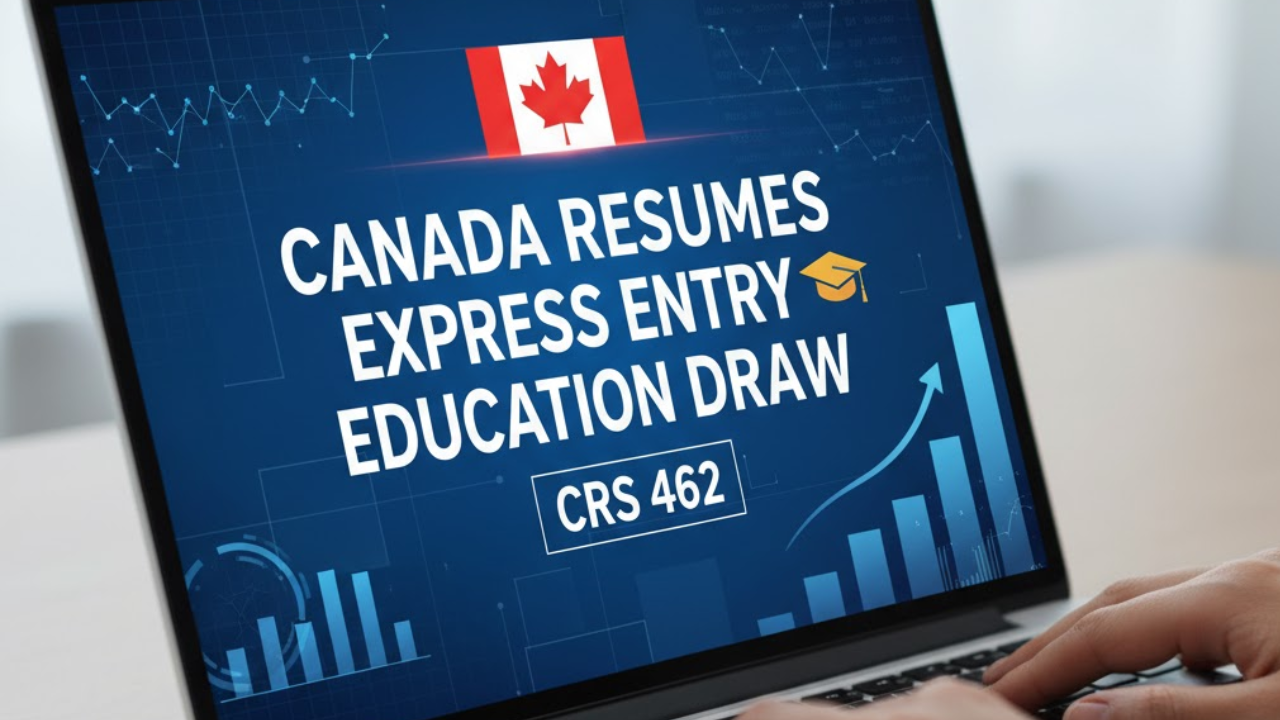
A Nutritionist’s Warm Guide to When to Enjoy Flaxs
Nutritionist Deepsikha Jain recommends 1–2 tablespoons of flaxseeds—morning, before meals or as a sn

Immigration, Refugees and Citizenship Canada (IRCC) conducted its first education category Express Entry draw in more than four months. In this draw, 2,500 Invitations to Apply (ITAs) were issued to candidates in the education sector, and the Comprehensive Ranking System (CRS) cut-off dropped to 462.
This event represents a major opportunity for skilled professionals in the education sector who aspire to immigrate to Canada. It also signals a renewed emphasis by IRCC on addressing workforce needs through category-based Express Entry draws, a system that targets specific occupational sectors such as healthcare, trades, transport, and education.
This article explores the background of the education category, the draw’s key details, eligibility factors, and what this means for applicants moving forward.
The Express Entry system manages applications for Canada’s primary economic immigration programs — including the Federal Skilled Worker Program (FSWP), Federal Skilled Trades Program (FSTP), and Canadian Experience Class (CEC).
Applicants in the pool are ranked based on a Comprehensive Ranking System (CRS) score, which considers factors like age, education, language ability, and work experience. Periodically, IRCC issues Invitations to Apply (ITAs) to top-ranking candidates.
In 2023, IRCC introduced category-based draws to help address critical skill shortages across Canada. Under these draws, candidates are invited based on occupational expertise rather than only their CRS scores.
The education category targets teachers, instructors, early childhood educators, and other education professionals. This category recognizes the urgent need for skilled educators across Canadian provinces, especially as school systems face staffing challenges and expanding student populations.
In this round, 2,500 Invitations to Apply were issued, with the CRS cut-off dropping to 462, compared to 479 in the previous education draw held in May 2025.
This reduction of 17 points in the CRS threshold significantly widens eligibility, allowing more mid-range CRS candidates to qualify — particularly those with strong education credentials but moderate work experience or language scores.
To be considered in this draw, candidates needed to have submitted their Express Entry profile before July 9, 2025. This eligibility cut-off date ensures IRCC evaluates candidates already in the system before newer profiles enter the pool.
While IRCC has not released an exhaustive list of eligible roles for the September draw, prior rounds targeted the following NOC (National Occupational Classification) categories:
University professors and lecturers
College and vocational instructors
Early childhood educators and assistants
Elementary and secondary school teachers
Educational counsellors and academic advisors
Teacher aides and special education assistants
Applicants must have at least six months of continuous work experience in one of these occupations within the past three years to qualify.
The education system across Canada, particularly in provinces such as Ontario, Alberta, and British Columbia, continues to face staffing shortages. Pandemic-related retirements, growing class sizes, and the demand for specialized instruction have strained the education workforce.
By reopening the category draw with a lower cut-off, IRCC aims to attract qualified professionals who can fill these gaps and strengthen Canada’s public education infrastructure.
The lower cut-off and larger invitation count signal an attempt to make the immigration process more inclusive. Candidates who previously missed out due to slightly lower CRS scores now have a stronger chance.
Canada’s immigration policy increasingly prioritizes labour market alignment — meaning draws are designed to meet real-time economic and sectoral demands rather than simply selecting the highest-scoring candidates.
This draw represents a golden opportunity for teachers, instructors, and education specialists seeking permanent residency. The lower CRS threshold opens the door for mid-career educators who may not have extremely high CRS scores but possess in-demand skills.
Professionals in early childhood and special education roles stand to benefit particularly, as these areas face chronic shortages in many provinces.
Keep your profile active and up-to-date. Ensure your work experience and job codes accurately reflect your role under the eligible NOC categories.
Improve your CRS score. Language test upgrades, provincial nominations, and additional educational credentials can enhance ranking.
Submit your profile early. Draws are often restricted to profiles submitted before a specified date — early submission ensures eligibility for future rounds.
Stay informed. IRCC does not follow a fixed schedule for category-based draws. Monitoring immigration updates regularly is essential.
Education category draws are infrequent — there was a gap of four months between the May and September rounds. Applicants cannot predict when the next education draw will take place, making it important to maintain valid, complete profiles.
Cut-off scores fluctuate based on the size and composition of the Express Entry pool. A future draw could easily see a higher threshold depending on competition and policy priorities.
Education-related occupations often require detailed verification of work experience, employer reference letters, and sometimes provincial teaching certifications. Incomplete or ambiguous documentation can delay or disqualify applications.
As category-based draws become a regular feature of the Express Entry system, IRCC is expected to continue using them strategically to fill gaps in priority sectors.
The education category aligns with Canada’s long-term national goals: strengthening early childhood education, expanding access to skilled instructors, and supporting post-secondary growth.
Future draws may see:
Expansion to include more NOC codes under the education category.
Larger invitation rounds to meet growing demand for educators.
Integration of provincial nomination programs (PNPs) to align national and local hiring needs.
Disclaimer:
This article is based on publicly available immigration updates as of October 2025 regarding Canada’s Express Entry education category draw. Policies, CRS cut-offs, and eligibility criteria are subject to change. Readers are encouraged to verify information with official IRCC announcements before applying.